Assalamualaikum!
Yo my diary game about to visit the Sindh Pakistan. In this, I will tell you what the city of Sindh is like, how is its life, how is its language, what is its civilization and culture, what is its river and how are the people living here.
Short history of Sindh.
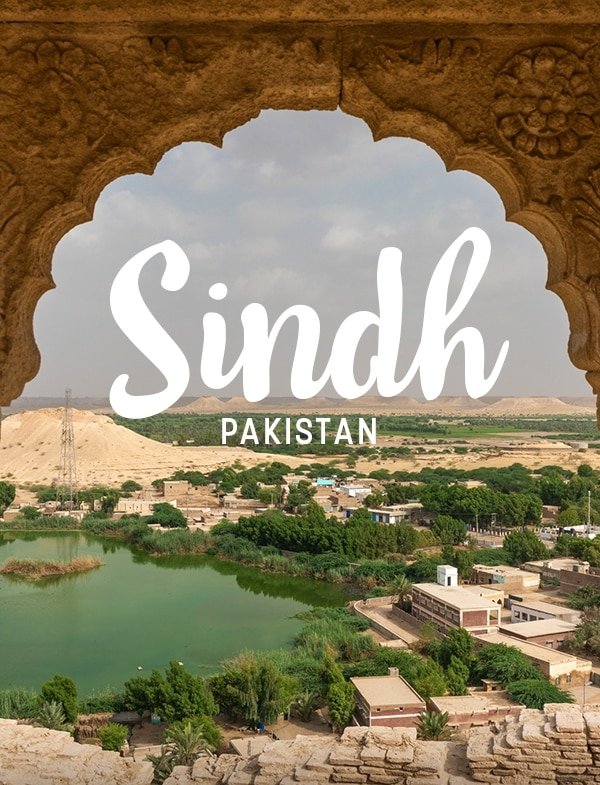
Sindh is a province of Pakistan that is situated in the southeastern part of the country. It is bordered by the Arabian Sea in the south, Balochistan province in the west, Punjab province in the north, and the Indian state of Rajasthan in the east.
The Sindh region has a rich and ancient history dating back to the Indus Valley Civilization, which flourished here between 2600 BC and 1900 BC. The civilization left behind a legacy of impressive architecture, including the historic ruins of Mohenjo-daro and Harappa.
Throughout the centuries, Sindh was ruled by a succession of empires and dynasties, including the Persians, Arabs, and numerous Islamic empires. The most notable of these was the Islamic Mughal Empire, which ruled over the region from the 16th to the 19th century.
In the 19th century, Sindh was annexed by the British Empire, and it remained a part of British India until the partition of India in 1947. Following the partition, Sindh became a part of the newly created state of Pakistan, along with other Muslim-majority regions of British India.
Sindh has played a crucial role in Pakistan's history, particularly during the country's struggle for independence in the mid-20th century. Its capital city, Karachi, is the economic and cultural hub of Pakistan and is home to a diverse population representing many ethnic groups.
Today, Sindh is home to over 47 million people, making it the second most populous province in Pakistan after Punjab. Its economy is largely based on agriculture, with crops such as cotton, rice, and sugarcane being major contributors to the region's GDP. Sindh is also known for its rich cultural heritage, with traditional arts and crafts, festivals, and music being integral parts of its identity.
Sindh River.
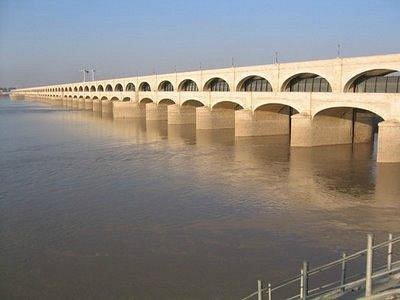
Sindh River is one of the most significant rivers in Pakistan, running through the province of Sindh. This river has significant cultural and historical importance in the area, as it is often mentioned in ancient texts and myths.
The river spans almost 950 km and provides water for irrigation, which is essential for the agricultural economy of the region. Sindh River is also a habitat for various flora and fauna, contributing to the ecological diversity of the area. Despite its importance, the river is facing many environmental concerns like pollution and a lack of water flow during the dry months.
The Sindh River is a significant river in Pakistan, originating from the Himalayas and flowing through the province of Sindh before discharging into the Arabian Sea. It has a total length of about 1,000 km and serves as a major source of water for irrigation to the agricultural lands of the region. The river supports the livelihoods of millions of people who depend on it for agriculture and fishing activities. It is also an important source of hydroelectric power and serves as a habitat for various wildlife species, including rare species like the Indus dolphin. Despite its ecological and economic importance, the river faces various challenges, including pollution due to industrial and agricultural waste, silting, and water scarcity, which require urgent attention for their sustainable management and conservation.
Culture of Sindh
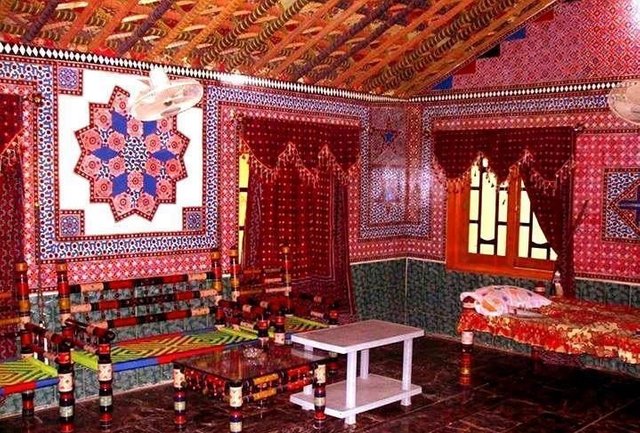
The culture of Sindh, a province of Pakistan, is rich and diverse, influenced by its history and geographical location. Here are some key aspects of Sindh's culture:
Language: Sindhi is the main language spoken in the province, with Urdu and English being other commonly spoken languages.
Music: Sindh is known for its rich musical heritage, with various genres including sufi, qawwali, and folk music. The famous musical instrument used here is the "alghoza," which is a double-flute made of bamboo.
Festivals: Sindh is home to a variety of cultural and religious festivals throughout the year such as Urs, Eid, Diwali, and Holi.
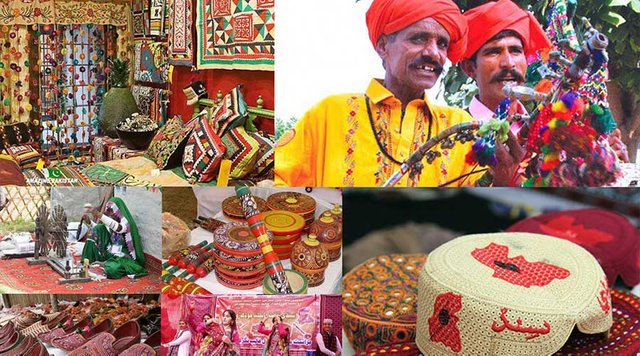
Food: Sindhi cuisine is an amalgam of the cuisines of South Asia and Middle Eastern cuisine, with some variations of its own. Famous dishes include Sindhi Biryani, Sindhi curry, and Dal Chawal.
Art and Craft: The richly embroidered "ajrak" is a traditional textile of Sindh, and "kashi" is a type of weaving done on a traditional wooden loom. Various handicrafts such as bangles, shoes, and carved wooden objects also hold significant importance in Sindhi culture.
Literature: Sindhi literature is one of the oldest and richest South Asian literary traditions, dating back to the 14th century. Notable Sindhi poets include Shah Abdul Latif Bhittai and Sachal Sarmast.
Architecture: Sindh is home to many historic sites, such as Mohenjo-daro, a 5,000-year-old archaeological site, and the tomb of Shah Abdul Latif Bhittai, a 17th-century Sufi saint. The blue-tiled Shah Jahan Mosque in Thatta is also a prominent example of Mughal-era architecture in the province.
City scene of Sindh.
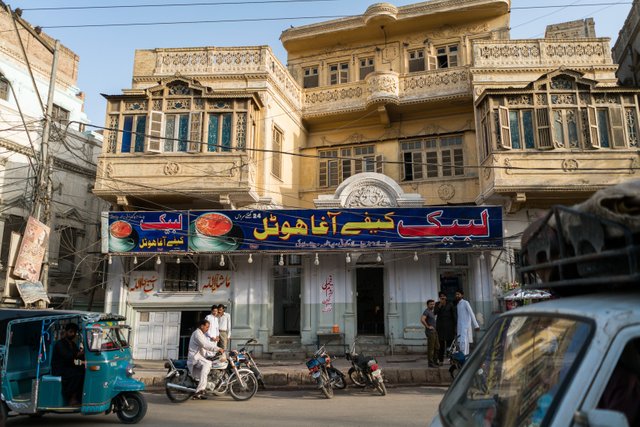
Karachi- Port city, Quaid-e-Azam's mausoleum, Clifton Beach, Mazar-e-Quaid, Mohatta Palace, Karachi Zoo.
Hyderabad- Sindh Museum, Pakka Qila, Tombs of Talpur Mirs, Churi Parah Bazaar, Bhit Shah Shrine.
Thatta- Shah Jahan Mosque, Keenjhar Lake, Makli Hill Necropolis, Tomb of Abdul Wahab.
Sukkur- Lansdowne Bridge, Sadhu Bela Temple, Ayub Bridge, Mohammad Bin Qasim Park.
Larkana- Moen Jo Daro, Garhi Khuda Bakhsh Shrine, Sain Laru Shah's Shrine, Shahi Bazaar.
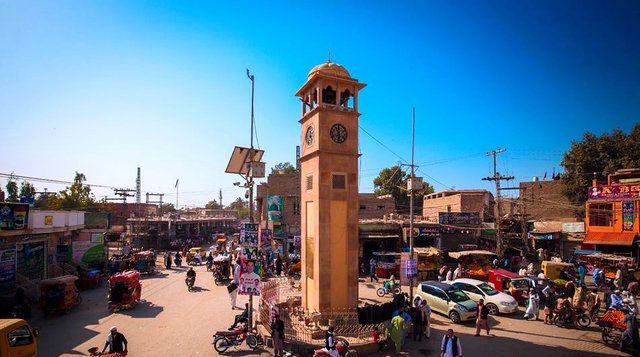
Dadu- Gorakh Hill Station, Manchar Lake, Sehwan Sharif, Kotri Barrage.
Mirpurkhas- Rani Sati Temple, Kali Temple, Mirpurkhas Fort.
Jacobabad- Jain Mandir, Shrine of Imam Baksh Chandio, Lal Qila.
Ghotki- Tomb of Pir Padshah, Sukkur Barrage, Dhoro Naro Bridge.
Shikarpur- Saif-ul-Muluk Mosque, Tomb of Sheikh Jaafar Thanesar.
Small hills in Sindh.
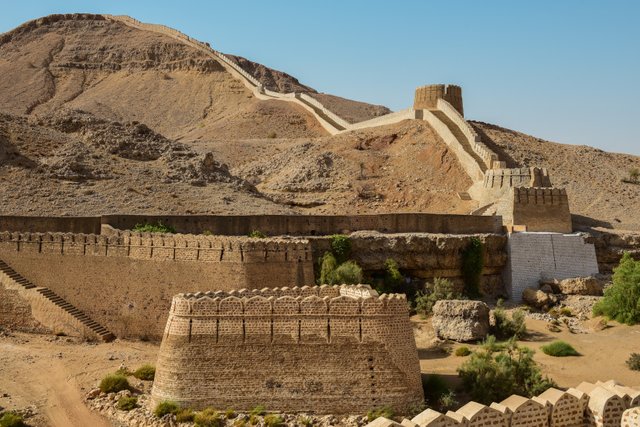
Sindh is a province in Pakistan that is located in the southern part of the country. It is home to several small hills that are popular among tourists who love to explore natural beauty. Here are some of the popular small hills of Sindh:
Gorakh Hill: Gorakh Hill is the highest hill station in Sindh, located in the Khairpur district. Its peak is about 5,688 feet above sea level, and it offers stunning views of the surrounding landscape.
Keenjhar Lake: While not technically a hill, Keenjhar Lake is located in the Thatta district of Sindh and is surrounded by small hills. It is the second-largest freshwater lake in Pakistan and is a popular destination for fishing and boating.
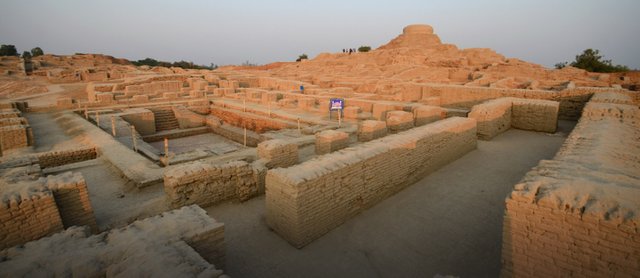
Chota Jam Nadi: Chota Jam Nadi is a small hill range located in the Dadu district of Sindh. It is home to several small villages and provides a beautiful natural setting for hiking, camping, and picnicking.
Kutte Ji Qabar: Kutte Ji Qabar is a small hill located in the Hyderabad district of Sindh. It is named after a local saint, Kutte Shah, who is believed to have lived there in the 18th century.
Ranikot Fort: Ranikot Fort is a large fortress located in the Jamshoro district of Sindh. It is surrounded by several small hills and is believed to be the largest fort in the world. It is a popular tourist attraction and is also known as the Great Wall of Sindh.
All these pictures are copyright pictures, on which base you give the plagiarism free tag.
Is it steemexclusive content? @uzma4882
https://www.tripadvisor.in/Attraction_Review-g317120-d6197407-Reviews-Sukkur_Barrage-Sukkur_Sindh_Province.html#/media-atf/6197407/90095503:p/?albumid=-160&type=0&category=-160
https://www.historyhit.com/locations/mohenjo-daro/
https://www.pinterest.com/pin/348325352425023004/
https://www.aboutpakistan.com/blog/sindhi-culture/
his content is AI and Paraphrasing. your review comment is totally meaning less.
Downvoting a post can decrease pending rewards and make it less visible. Common reasons:
Submit
I have checked through using plagiarism tool Might be, Due to his in detail description of an article in result no plagiarism found in his post. Rather I also mentioned in reviewing Comment please use caption from where you have taken pictures .. Thanks for highlights too .
Downvoting a post can decrease pending rewards and make it less visible. Common reasons:
Submit
There a lot of plagiarism types I think you have learn in during achievement post completion.
As a Mod, what practices and strategies are to implementing for abuse posts ?
Downvoting a post can decrease pending rewards and make it less visible. Common reasons:
Submit